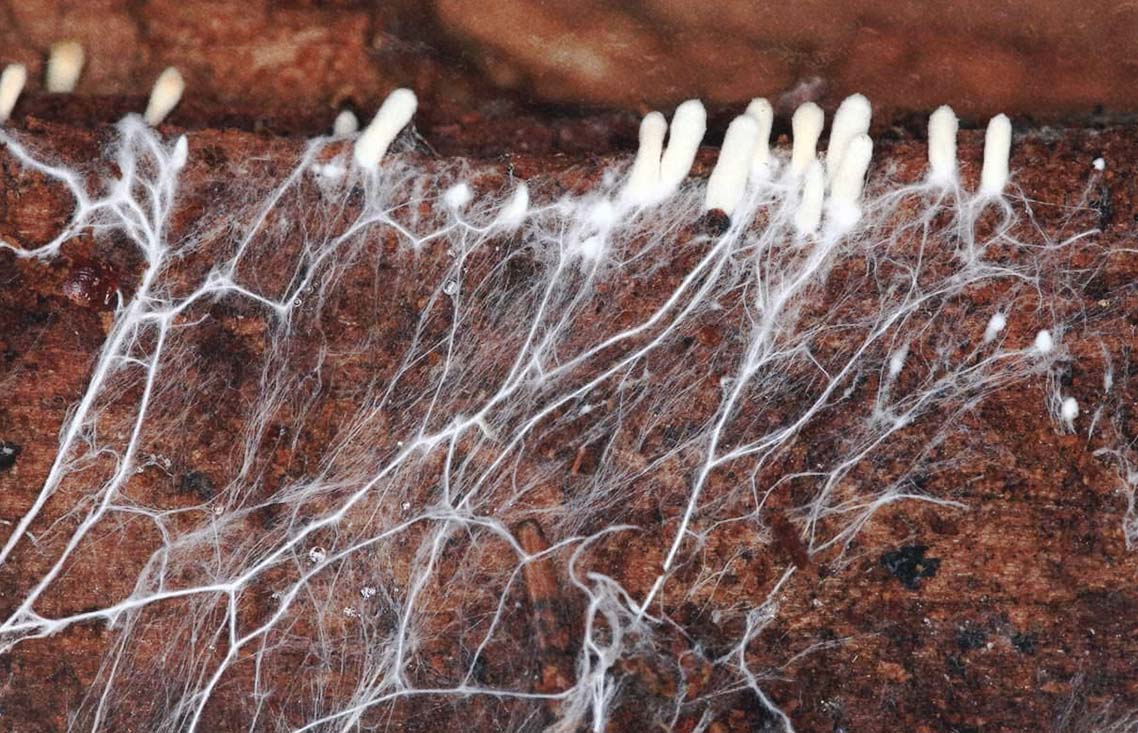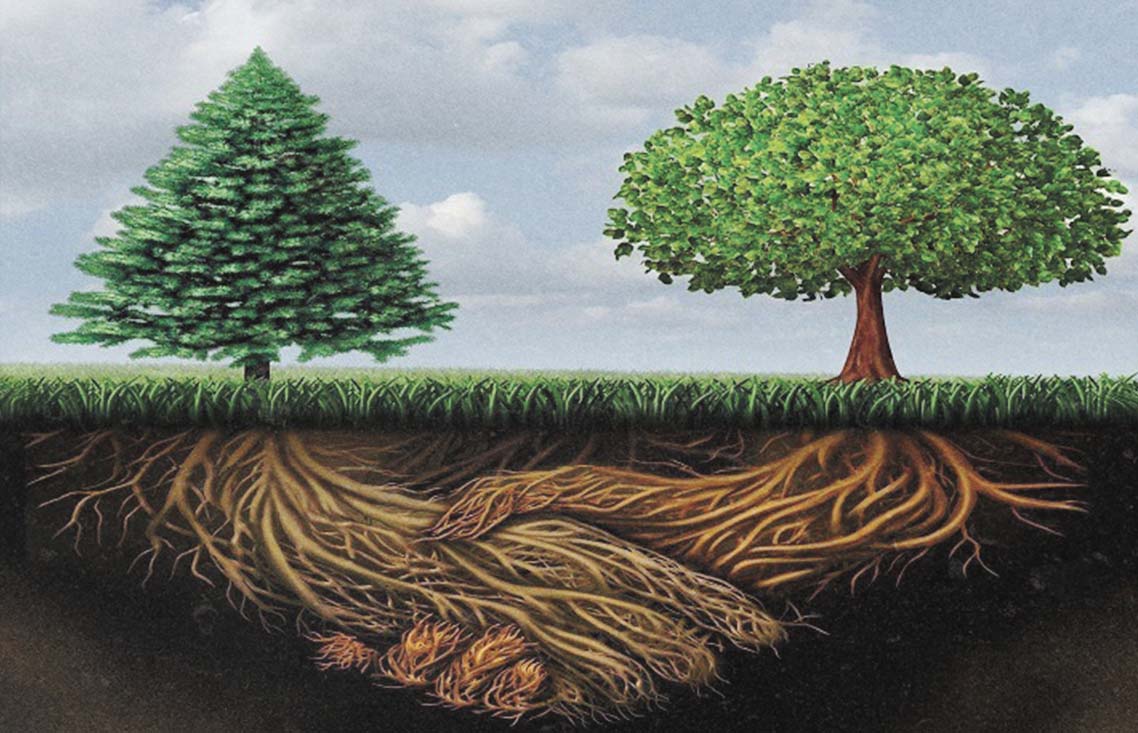Underground Wisdom
The Mycorrhizal Network
Nature’s Hidden Intelligence
When hiking in the forest, it’s common to notice to what is visible in front of our eyes. Leaves in the wind, birds chirping, sunlight on dewdrops… However, underneath the soil, tangled among the roots of the trees, lies a fascinating network of fungus. It is like a hidden world of intelligence, that connects trees through a vast network of mycorrhizal fungi.
Often referred to as “woodwide web”, this system links individual plants together to transfer water, nitrogen, carbon, other minerals and even chemical signals. So to say, through this mycelium network trees of a forest are able to communicate with each other in an active way. This finding reveals how they are more of a community rather than separate individuals.
Symbiotic Exchanges
It is important to note, that the typical mushrooms we see growing above the ground are only the “fruit” of the fungus. Most part of the organism lives beneath the soil, and creates the mycorrhizal network. This is formed of mycelium, which are the thin threads of the fungal organism, looking similar to roots of a tree or neurons in our brains. These threads stretch across the soil, wrapping themselves around roots, connecting individual plants together.
Tree roots engage in a fascinating symbiotic relationship with mycorrhiza fungi, extending their reach far beyond the tree’s immediate vicinity. On one hand, the mycorrhiza fungi shares the efficiently absorbed nutrients, such as phosphorus, nitrogen and water. This would otherwise be challenging for plant roots to access, so in return, trees share their resources. They produce sugars through photosynthesis, converting carbon dioxide and sunlight into energy, from which a portion is shared with the fungi, serving them as a carbon source.
In healthy forests, every tree is connected to the others through this intricate mycorrhizal network, enabling them to share resources with neighbouring trees. For example, in a forest ecosystem, a mature tree with access to abundant sunlight may transfer excess nutrients through the mycorrhizal network to a shaded sapling, ensuring the collective health of the community.
The Silent Communication of Forests
Trees can warn each other of potential threats, such as insect attacks, extreme weather events or diseases through the mychorrizal network. Typically, the older the tree, the more fungal connections it has. A linchpin of such a system, or a “mother tree” is the oldest, most seasoned tree in a forest. It has the most connections to detect signals, and it is able to reach most resources with deep roots below and tall branches above ground. Therefore, the task to send nutrients upon distress is often theirs.
For instance, in times of environmental stress, such as drought, trees connected through the mycorrhizal network can redistribute water efficiently. Some trees may reduce water consumption, allowing others in need to access the shared water supply, promoting the survival of the collective community.
The mycorrhizal network, acting as nature’s neural network, demonstrates the sophisticated interconnectivity of trees and challenges the conventional view of plants as passive organisms. As we dive deeper into this hidden intelligence, the forest transforms into a living, breathing organism where trees thrive not only as individuals, but as integral parts of a community.
So, next time you’re on a hike, don’t forget to give a thought to the intricate system embedded in the heart of the forest, right under our little feet.
Let’s Talk GET IN TOUCH Let’s Talk GET IN TOUCH Let’s Talk GET IN TOUCH Let’s Talk GET IN TOUCH





